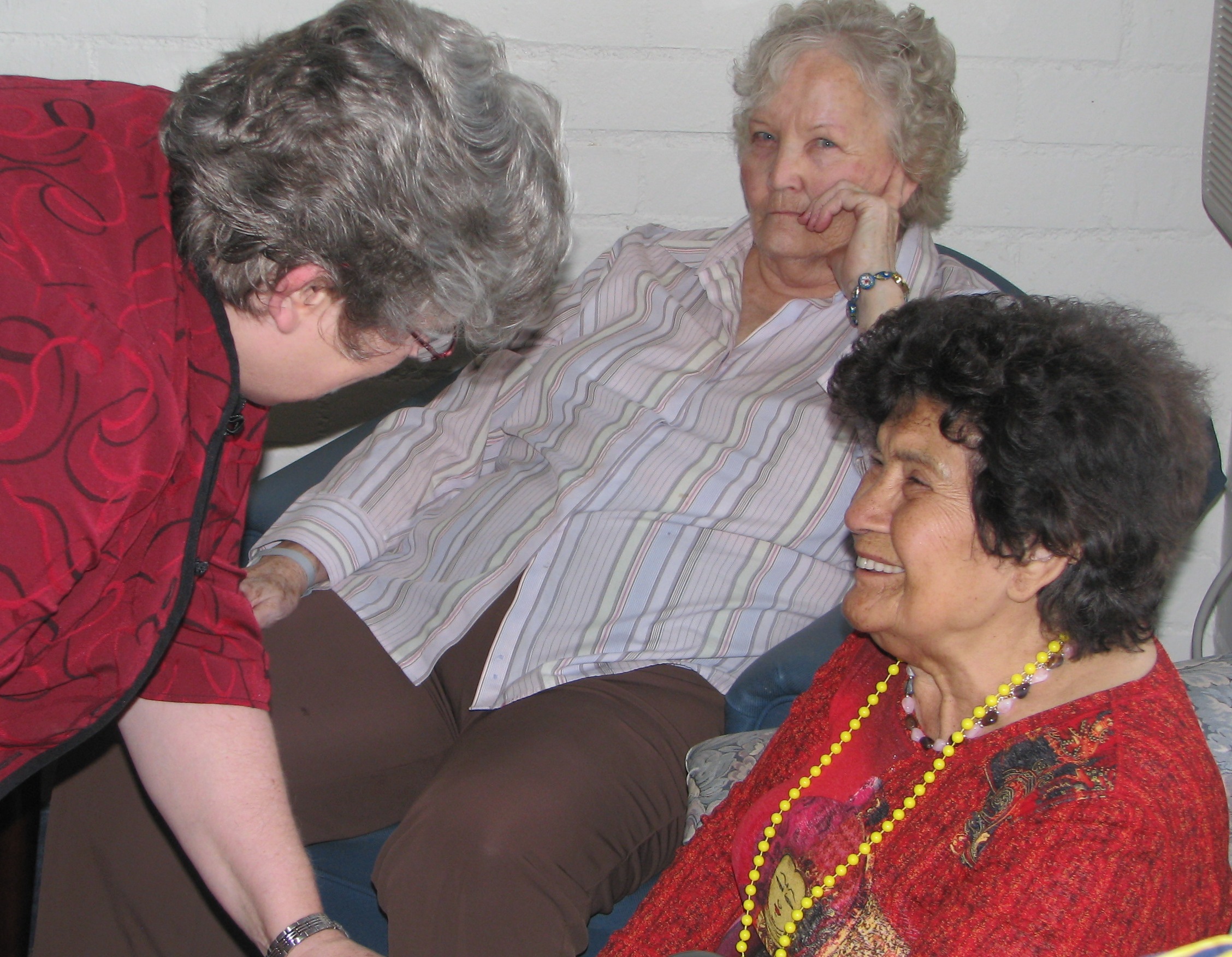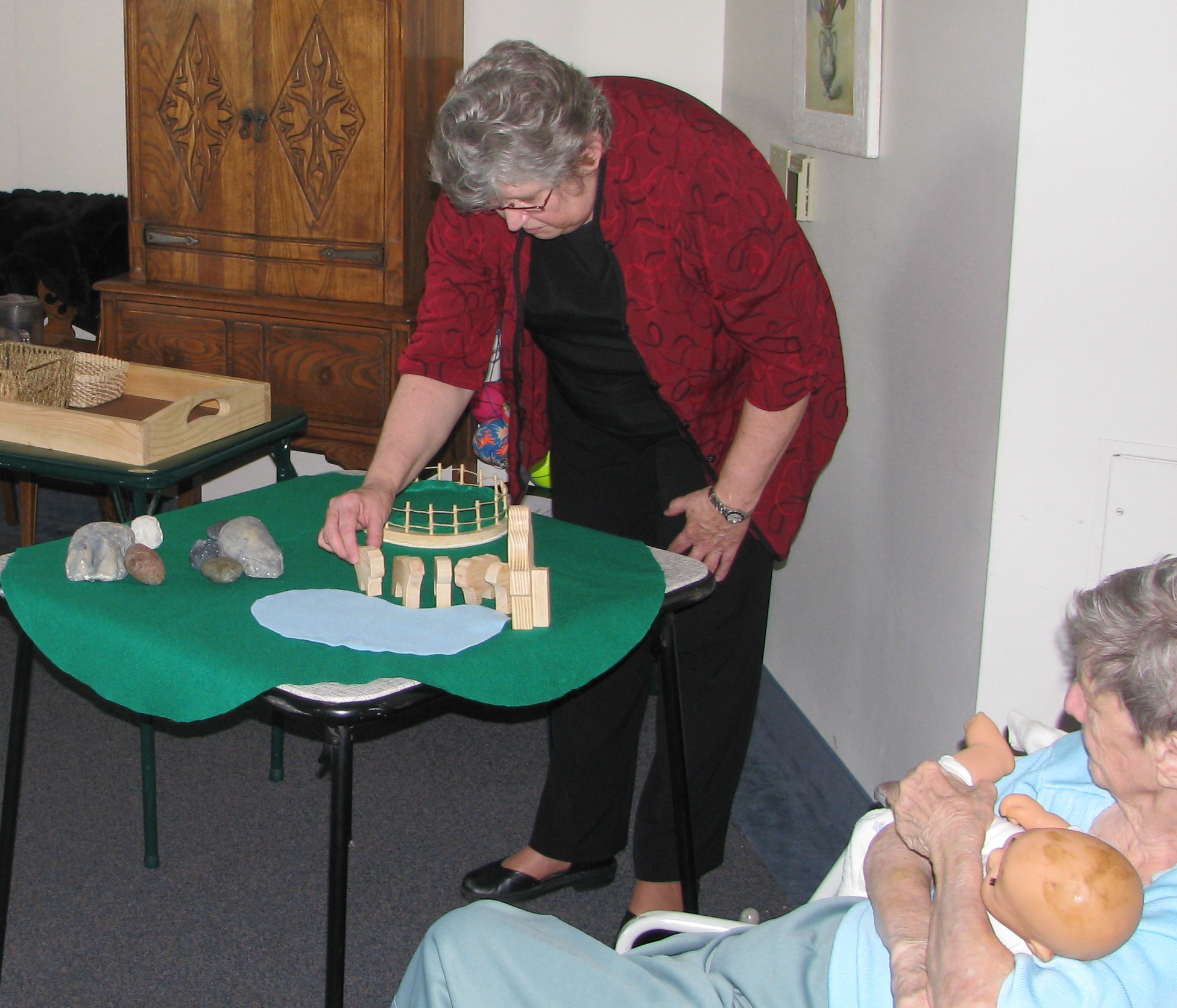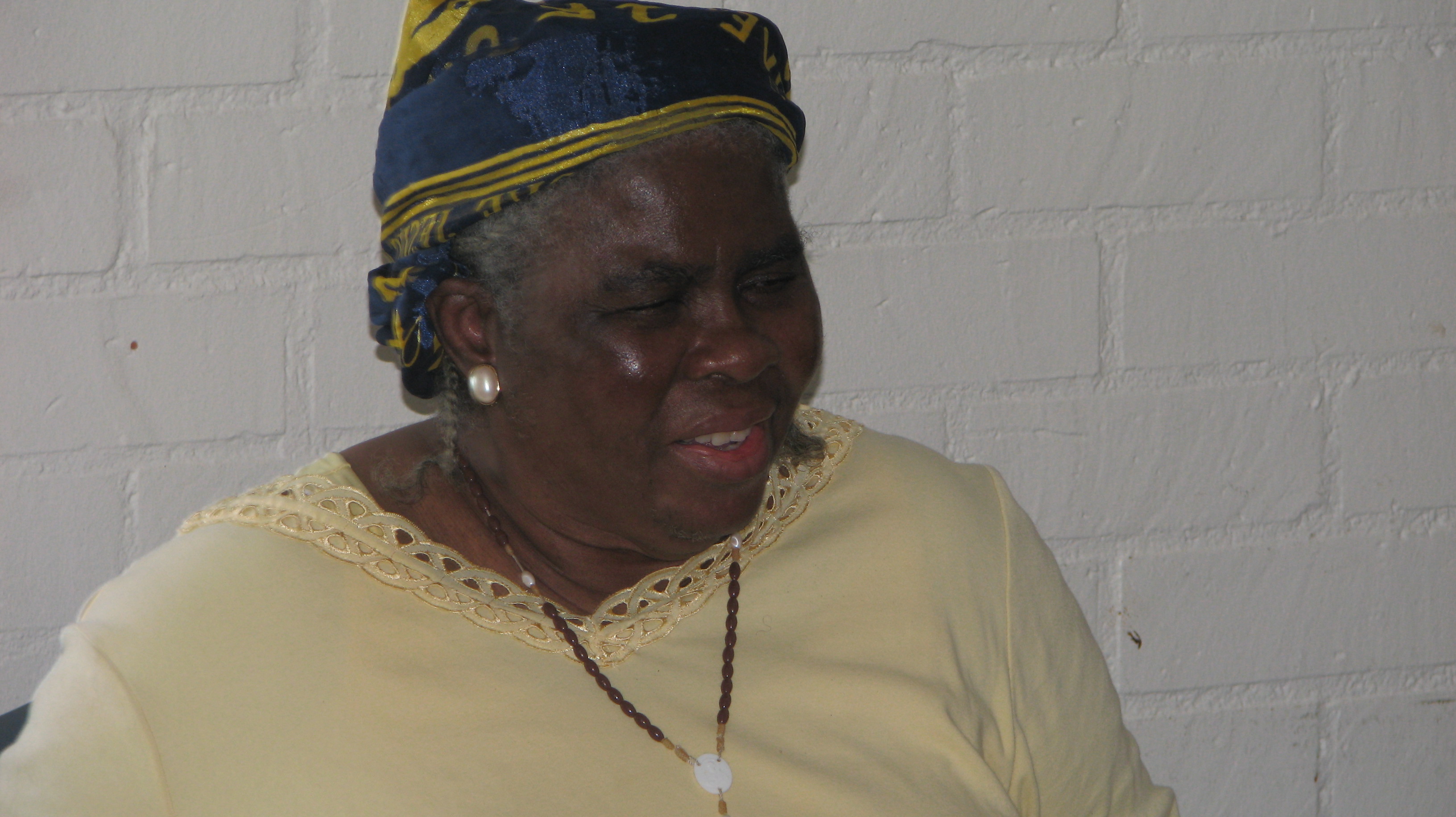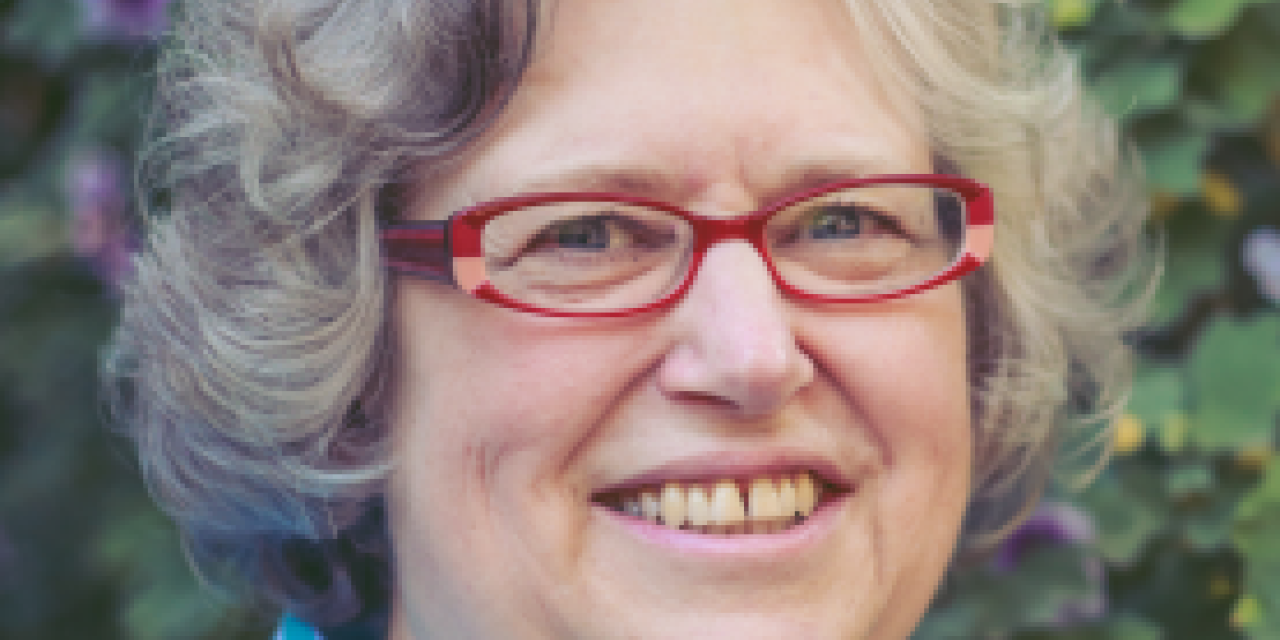Nancy Gordon is ordained in the Evangelical Covenant Church and is the director of the California Lutheran Homes Center for Spirituality and Aging. In her previous job, she used a Vital Worship grant to design and implement “Sensing the Sacred,” a worship experience for people with dementia. In this edited conversation, Nancy Gordon talks about the untapped potential of this small-group worship experience.
What inspired you to create Sensing the Sacred?
 |
| Greeting and blessing people by name |
Almost 20 years ago, when I was an associate pastor, I went on a pastoral retreat where Sonja Stewart presented the Young Children in Worship (YCW) program. I experienced “entering the story” the same way kids do. Being on the receiving end showed me that this approach works with fully functioning adults—and convinced me that it could work with adults who have dementia.
My next job was directing the Growth Opportunities program at Friendship Village, a large continuing care retirement community in Schaumburg, Illinois. My charge was to put a spiritual foundation under activities, recreation, arts, fitness and other classes. I discovered that leading worship with folks pretty far along in their disease is hard, because all the words we normally use in worship overwhelm them. In 2004, I applied for a grant from Calvin Institute of Christian Worship to adapt YCW for our folks. There were so many things on my plate in that job, but receiving the grant validated that the idea was worth trying.
How is a Sensing the Sacred service the same or different from a Children & Worship session?
It usually works best if services are no more than 30 minutes long. I follow Sonja’s teaching and philosophy as much as possible and try to keep a very structured format—doing things the same way every time and keeping words to a minimum. We don’t do the art or feast, since many adults with dementia have swallowing issues or no longer have the ability to pick up a paintbrush. Also, for these participants, adding art and the feast is too much, too long and too abrupt a change from the other parts of worship.
Like YCW, we use wooden figures to tell Bible stories as the “sermon” part of worship, but we make the figures a little larger. Friendship Village residents made the original figures in the woodshop. Now other residents make them here in Anaheim, California. Even though many thought it wouldn’t work to do the story without looking at the participants, I stuck to Sonja’s insistence that the presenter’s eyes be focused on the story. It works!
However, we found we needed to make the wondering questions a little more focused in order to get any verbal response from the participants. Instead of saying, “I wonder how the sheep who was left behind felt,” we say, “I wonder if the sheep who was left behind felt afraid.” And when it’s time to pray, the leader needs to offer prompts to help people verbalize concerns or thanksgivings.
What lets you know that your method is touching people with cognitive loss?
When working with a population that is experiencing confusion and memory loss, you have to expect almost anything, from people wanting to leave to people falling asleep. Yet I often found that the singing, story, scripture reading and prayer did strike a chord with the participants. I always greet everyone by name when I start, and I end by going around and blessing each one by name. Their response to me at the end is almost always more focused and present than when I greeted them. Many respond with a blessing back to me. A housekeeper observing from the hall told me she had never seen residents pay attention to anything else the way they did with this.
How has learning and telling the stories influenced you?
 |
| Telling the Good Shepherd story |
I find the whole process to be very centering. When you focus on the figures and on telling the story, you enter the story in a different way than when you just read it or hear it. Women who led YCW at my church spoke of how it nourished them as well. Nursing home employees have commented that Sensing the Sacred not only makes the residents seem calmer, but they, too, feel calmer after experiencing the worship.
How many churches, continuum of care facilities or other organizations are using Sensing the Sacred?
Its use is still very limited, probably because I haven’t had much time to use and promote it. I developed and tested it at Friendship Village and brought it here to California. But it’s been almost an add-on to my already full jobs. In 2010, I got a Wingspread Best Practice award for Sensing the Sacred, and, a few years ago, I did a daylong workshop for 10 people in Southern California.
I’ve corresponded with and sold kits to retirement community chaplains and people in congregations. A Lutheran church in California was using it for a while, but then the woman who was doing it moved. A Catholic theology professor in Australia emailed me that he encouraged his “Faith and Human Development” students to check out Sensing the Sacred. It’s been used in churches and retirement communities but has been turned down in at least one Veterans Administration facility for being “too religious.”
It’s been several years since I’ve presented it, because I have no resident care responsibilities in my current job. Instead my energies have gone into publications and the International Conference on Aging and Spirituality.
What steps are needed to start offering Sensing the Sacred in a church, retirement community or adult daycare center?
Offering Sensing the Sacred requires preparation and intentionality. It’s easier to walk into a nursing home, preach a brief message or read a Bible story and sing songs. But that traditional dependence on words and concepts does not effectively communicate to people with dementia.I basically follow Sonja Stewart’s books, Young Children and Worship, co-authored with Jerome Berryman, and Following Jesus. The way I tell the story is very similar because Sonja put so much thought into it, practically and theologically. I have a script for the whole service. You can download free scripts and patterns for three stories and just the script for another story. I also sell kits with scripts, felt, wooden figures and a training video.
How would you like to expand the program?
 |
| Entering the story |
There’s lots of room for dialogue and improvement! I’ve written a script for the Easter story but do not yet have patterns or figures for it. I have an idea for how to do a “Follow Me” story. It’s fine to keep doing the same cycle of stories, because I’ve found that repeating them doesn’t blunt their meaning. And the stories are new each time for people with memory loss. Retirement home staff is pulled in so many directions, so I’d love to see churches develop this as a ministry to take to places where people with dementia live or gather.
LEARN MORE
Nancy Gordon’s Sensing the Sacred webpages offer free scripts and patterns, a slideshow and kits for purchase. Read her article on creating hope in the face of dementia. Download presentations and handouts from the 6th International Conference on Aging and Spirituality, which Nancy Gordon organized.

